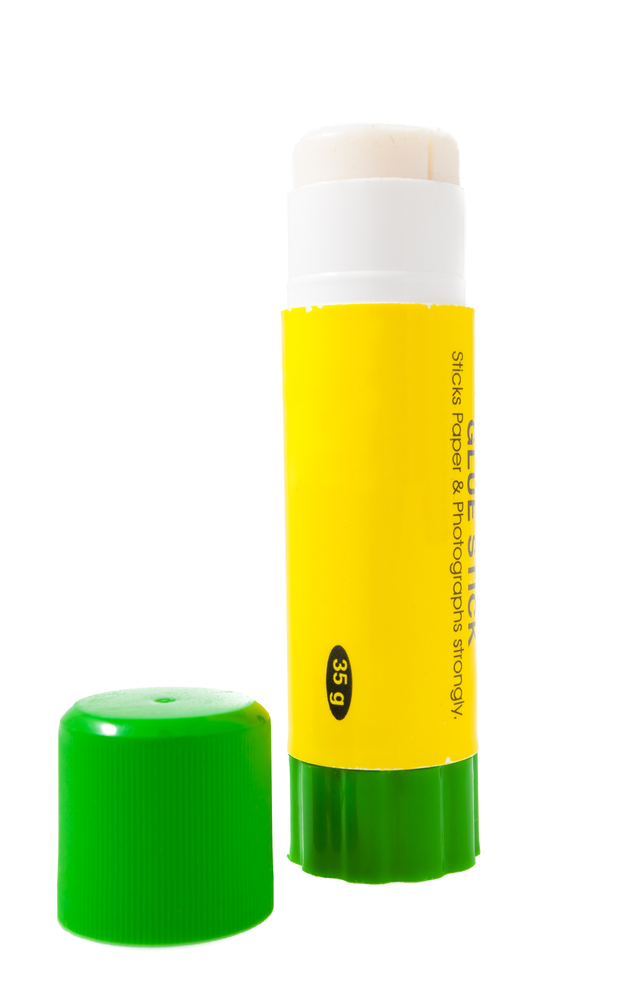
Raptor announces results of cysteamine trial for Huntington's disease
Raptor Pharmaceuticals announces intermediate results from a long-term study of cysteamine in Huntington's disease

A chemical called cysteamine has long been of interest as a potential therapy for Huntington’s disease. Now, Raptor Pharmaceuticals has announced the interim results of a study of cysteamine in HD patients. The trial failed to meet its pre-specified goal, but there are some interesting details in the data suggesting the ongoing trial deserves attention.
Trans-glu-what?
Cysteamine is a substance with a very simple chemical structure. When fed to cells growing in a dish, it blocks the activity of tiny machines called tissue trans-glutaminases, or tTG’s. Basically tTGs work serve as cellular glue-sticks, pasting proteins together into big clumps.

Sometimes, making proteins stick together is really useful – the formation of our hair and skin as well as blood clotting all rely on the proper function of these little pasting machines. Other times this process can go wrong, and form clumpy blobs of protein where there shouldn’t be any.
HD, glutamine and tTG
The huntingtin protein, which is produced from HD gene, is the source of most of the problems that add up to cause Huntington’s disease. Proteins conduct most of the work of all the cells in our bodies. They’re made following the instructions coded in our DNA.
The mutation carried by all HD patients is an expansion of a repetitive stretch of DNA in the HD gene that reads ‘C-A-G’, over and over. When the HD gene is used by a cell to make a huntingtin protein, those extra C-A-G’s lead to a long stretch of the protein building block glutamine near one end of the huntingtin protein.
When this repetitive stretch of glutamine is bigger than normal, the whole huntingtin protein becomes extra-sticky. Many cells of HD patients, particularly brain cells called neurons, contain clumps of sticky protein, made mostly of the mutant huntingtin protein.
These clumps of sticky protein are found in a number of other brain diseases, including Parkinson’s and Alzheimer’s diseases, though the clumps are made of different stuff in each case. This commonality across diseases got HD scientists excited when it was first described, in the 1990’s.
Pasting proteins speeds Huntington’s disease?
Back to tissue trans-glutaminases! These glue-stick machines use glutamine in the sticky chemical reaction they carry out. That’s the same glutamine found in extra amounts in the mutant version of the HD protein.
Early in the 2000’s, there was a rash of studies showing that tTG’s can cause mutant huntingtin proteins to clump together faster, speeding cells towards the formation of large globs of protein.
This gave scientists a nice model for how Huntington’s disease might happen: the HD mutation causes the huntingtin protein to be extra sticky, it’s stuck into big globs of junk by tTG’s, then brain cells get sick and HD results. This was a particularly exciting idea because scientists knew that simple chemicals like cysteamine block tTG’s, and so might be useful as HD drugs.
Assuming these ideas are true, we should be able to block tTG’s with cysteamine, slow the accumulation of cellular garbage and prevent HD. Tempted by the logic, HD scientists rushed to test the idea.
Sure enough, treating HD mice with cysteamine (or getting rid of tTG altogether using genetic tricks) made their HD symptoms better. Great, right?
“We’re left thinking that the drug might work, if it’s tested in the right population, but we can’t be sure whether the one positive result was a fluke.”
Well, the results turned out to be not so simple. Mice treated with cysteamine got better, but didn’t show evidence of reduced globs of protein in their brains! The drug had exactly the beneficial effect that scientists predicted, but it didn’t seem to be working in the way they had predicted it would work.
Targets and mechanisms, who needs ’em?
When developing drugs, scientists often talk about targets and mechanisms. A ‘target’ is the specific part of the cell that you’re trying to get your drug to stick to. In this case, the target for cysteamine was proposed to be tTG’s – the machines whose work you’re trying to change with a drug.
We design drugs to stick to certain targets because we’re trying to interfere with a specific ‘mechanism’. This is the cellular process that you think you need to slow down, or speed up to make cells work better.
In this case, the proposed mechanism for cysteamine was that it would block tTG’s, this would result in less clumping together of mutant HD protein, and that cells would be healthier as a result.
The HD mice treated with cysteamine got better, but didn’t have less clumps of protein. That suggests that the drug was beneficial, but that the proposed mechanism was probably wrong.
Does this matter? Many drugs have been developed with no understanding of their mechanism. People chewed on willow tree bark for millennia for pain relief, without understanding that a compound found there, acetyl-salicylic acid, interferes with the process of inflammation.
But if we want to develop better drugs, it helps if we understand the mechanism by which they work. This knowledge lets scientists in the lab work out new variations of the compound that work better.
So, a drug without a mechanism is better than a kick in the head, but it’s not the best case scenario for a drug hunter.
Cysteamine fertilizes brain cells?
In 2006, a group led by Sandrine Humbert from Institut Curie in France, proposed a new mechanism for how cysteamine might work. Her group treated mice with cysteamine, and found that it increased levels of a really important chemical known as brain-derived neurotrophic factor, or BDNF.
BDNF acts as a ‘fertilizer’ for brain cells, and reduced levels of BDNF have been proposed to contribute to the development of Huntington’s disease. So, if cysteamine increases BDNF levels in the brain, this could be a really good argument in its favor.

Which of the mechanisms is at play when humans take cysteamine isn’t clear, and needs to be followed up for future work with this drug.
The design of the CYST-HD trial
The CYST-HD trial was designed to test whether cysteamine is effective in slowing HD progression. The trial enrolled 96 HD patients at the Centre Hospitalier Universitaire d’Angers in France.
The trial was planned to last for 3 years, which is longer than most HD trials of this type. This is a good idea, as it gives a drug a longer period to have an effect which might be needed in a slow-progressing diseases like HD. The recently announced results are from the halfway point of the study – 18 months since all the patients began treatment.
Each of the 96 patients was assigned to take either a branded form of cysteamine known as RP103, made by Raptor Pharmeceuticals, or to a control group who took inactive pills called placebo. The drug seemed pretty well-tolerated, as 89 of 96 patients remain on their assigned drug at 18 months.
Another interesting aspect of this study is that after 18 months, all the subjects were switched onto taking RP103. That way, if the drug has some beneficial effect, no one is stuck taking placebo for the entire 3-year duration.
Given the long duration of this study, the researchers decided to let all the participants continue taking their other medications. It would be difficult for patients to stop their other drugs for the duration of 3-year-long trial.
What did they find?
Raptor announced the 18-month results with RP103 in a press release claiming “Significantly Slower Progression of Total Motor Score in RP103 Treated Patients Without Tetrabenazine”. That sounds good, but what does it mean?
Any time two groups of patients are measured on some symptom, there’s bound to be some difference between them. The important question is whether that difference is through random chance or is a real effect of a drug. Scientists use statistical tests to tells us how ‘surprising’ a difference is. If it’s really surprising, we believe the difference is real rather than having occurred by chance. We call this a statistically significant result.
The ‘total motor score’ is a measure of how severe a Huntington’s disease patient’s movement symptoms are. The cysteamine-treated patients had slightly better motor scores than those in the placebo group in the CYST-HD trial. However, the difference between them was not very large, and the statistical tests showed that it was not statistically significant.
However, remember that the patients had been allowed to keep taking their normal drugs. One common drug, tetrabenazine is commonly used, and is known to improve the total motor score.

The scientists at Raptor reasoned that tetrabenazine might interfere with the result of the trial by masking the benefits of RP103. So, they decided to divide the participants into those taking tetrabenazine and those not taking it.
In the group of patients who didn’t take tetrabenazine, there was an improvement in motor symptoms in people taking RP103. This improvement was statistically significant, unlike the difference in those patients taking both tetrabenazine and RP103.
So, did it work, or not!?
Come on Jeff, tell us straight: did this trial fail, or did it succeed?
It’s not simple to say for sure whether RP103 had an impact. To understand why, imagine we’re playing pool. When shooting pool, if you’re going to make a complex trick shot, you need to say ahead of time that’s what you’re going to do. Telling people your plans before you make your fancy shot is the only way to convince spectators that’s what you actually planned to happen.
Raptor effectively just pocketed a fancy shot – one group of HD patients had ‘significantly’ better motor scores. Unfortunately, they didn’t call that shot before they made it. And the shot they did tell us about beforehand — the comparison between all RP103 treated and placebo patients — missed the pocket.
So we’re left thinking that the drug might work, if it’s tested in the right population, but we can’t be sure whether the one positive result was a fluke.
Now what?
These results have not yet been through the process of ‘peer review’, whereby other scientists have a chance to see all the data in full detail. What we know so far comes from the press release and a conference call with Raptor.
As we know, there’s a lot more to Huntington’s disease than movement symptoms. So while an improvement in motor score in a subgroup of patients is encouraging, a meaningful result will depend on seeing a slowing of progression in other things like thinking problems too, and whole-body measures of ‘quality of life’.
When the full report is published, HDBuzz will write a more comprehensive analysis of the data, hopefully including other measures of how these patients were doing in their daily lives.
Importantly, while we wait for this, the trial continues. All the enrolled patients are now taking cysteamine until 36 months of treatment. This longer-term study will hopefully enable us to get a more robust sense of whether the drug has positive effects for people, and the early results are an interesting hint.
Most encouraging of all, Raptor has approval for cystemaine in humans with a different disease, affecting the kidneys (nephropathic cystinosis). This provides hope that, if the 36-month data provide sufficient evidence, the path to the clinic for cysteamine may be smooth for Huntington’s disease patients.
Learn more
For more information about our disclosure policy see our FAQ…


